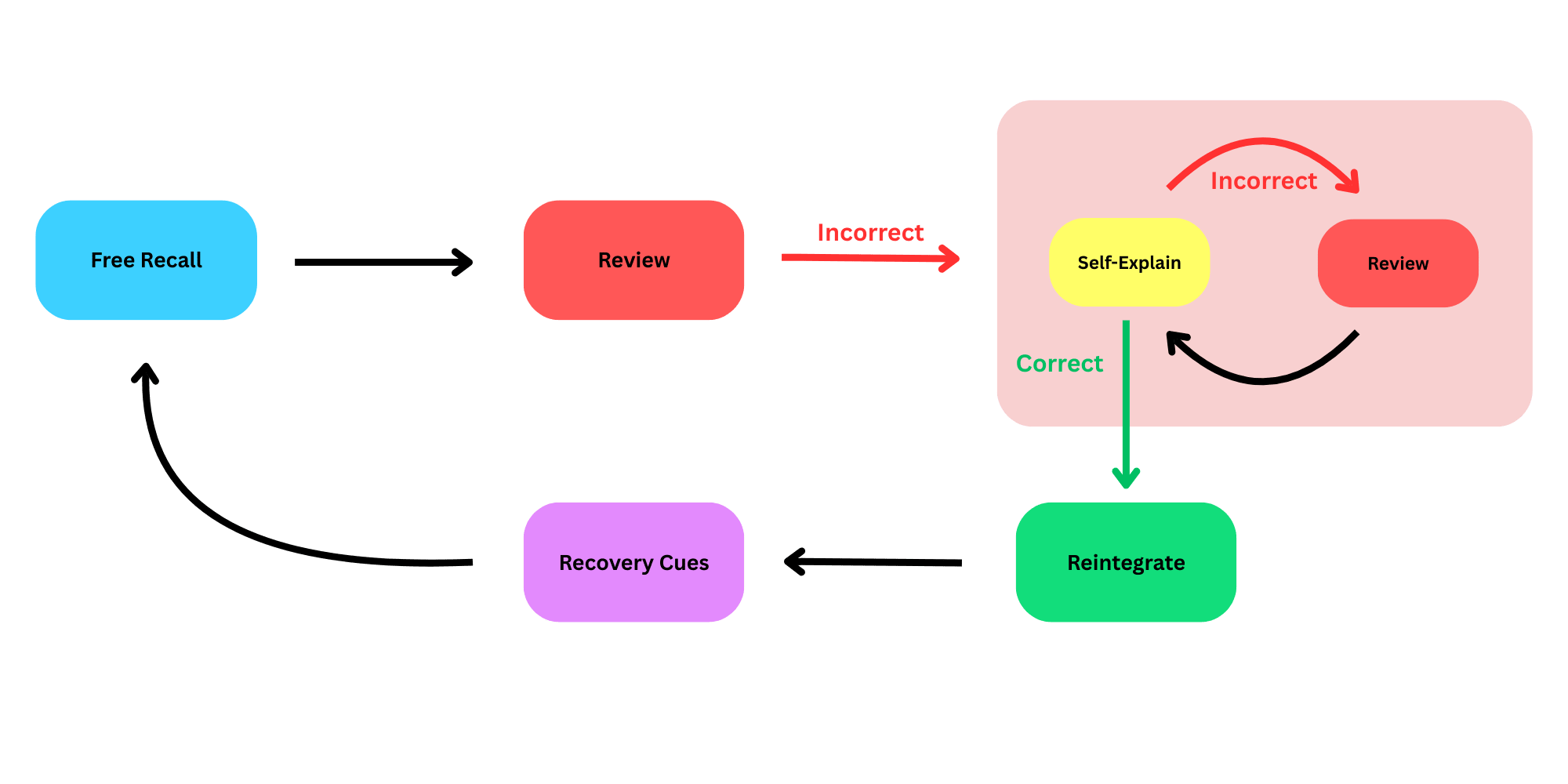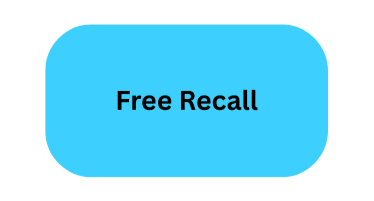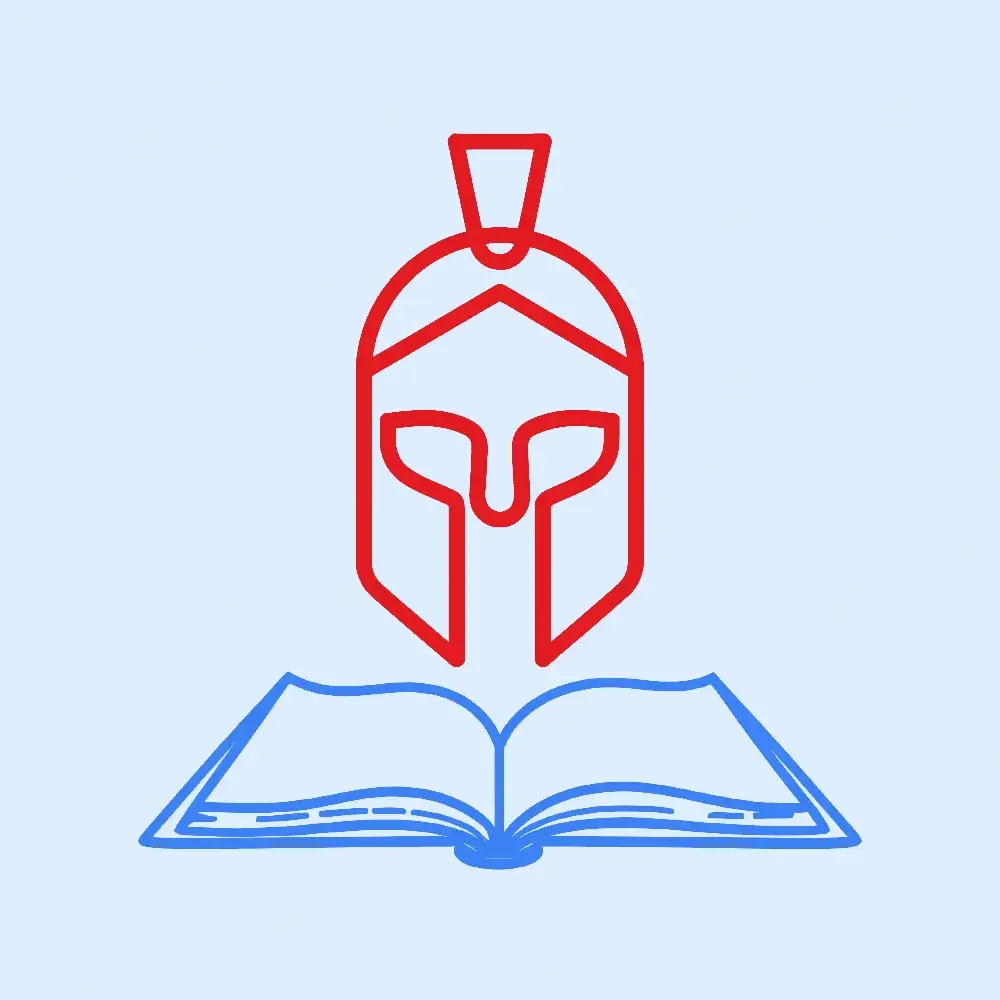Free recall gauntlet: a hardcore study loop that beats flashcards
(10 minute read)

You're here because you know anything worthwhile takes effort, including learning. Here's how to direct your effort in the most efficient possible way.
1. How to use free recall to remember more

It starts with free recall — writing everything you can remember about a topic on a blank sheet of paper.
Free recall is difficult because you get no specific cue, but that’s exactly why it’s powerful. Research shows that this difficulty leads to far stronger learning than cued-recall tasks like flashcards [1][2].
Here’s what free recall does better than cued recall:
-
Makes knowledge more readily accessible [2][3]
-
Improves transfer to new tasks [1]
-
Increases durability, slowing forgetting [2]
-
Strengthens related but unrecalled knowledge [4]
-
Boosts future learning of related knowledge [5]
-
Increases plasticity, making re-study more effective [6]
-
Prevents suppression of related knowledge (retrieval-induced forgetting) when done correctly [7]
-
Surfaces more details per minute (considering you generate both cue and response)
-
Prevents immediate feedback (meta-analyses find that delayed feedback consistently leads to better retention [18])
-
Requires no setup time (unlike flashcards)
-
Needs no external tools besides pen and paper
Sounds almost too good to be true, right? Feel free to dig into the science here.
Free recall gives you huge payoffs, but only if you know the material well enough to do it in the first place. That’s the paradox. These benefits only occur when you successfully recall — and you won’t remember everything.
But worry not: that’s exactly what The Free Recall Gauntlet was built to solve! It systematically strengthens every gap in your memory until you can remember everything in one free recall.
2. How to review after free recall for better retention

The next step is to revisit the source material. Thanks to a benefit of free recall called retrieval-induced plasticity, your recalled knowledge enters “edit mode” right after recall [1].
As you read and notice what you missed or misremembered, your brain is especially ready to correct those inaccuracies. But these edits aren’t fully consolidated until you retrieve again [2].
In other words:
-
Recall alone is good.
-
Recall + Re-reading is better.
-
Recall + Re-reading + Recall is best.
So why not just alternate recall and review until everything is correct?
We will do another free recall — but not immediately. Here’s why:
Waiting before the next recall creates a desirable difficulty that makes learning more durable [3][4]. The delay allows memories to consolidate, so the next recall strengthens long-term retention instead of reinforcing shaky familiarity.
Immediately recalling everything you missed is unlikely. Since you’re waiting anyway, you can boost the odds of successful recall by re-engaging with missed details in an effortful way. We’ll do this efficiently using a cycle of self-explanation and review
3. How to relearn details you couldn't recall

For missed details, we’ll use a cycle of self-explanation and review that ends with the reintegration of previously fragmented knowledge.
Any failure of retrieval is a failure of connection. You either:
-
Didn’t understand the material → weak or incorrect connections among the details.
-
Couldn’t access the material → poor connections between the detail and other knowledge [1][2].
We start with self-explanation to diagnose which connection failed.
-
If you can explain the idea clearly after the prior review, you do understand it — the issue was weak retrieval pathways. In this case, your knowledge needs stronger interconnections [3].
-
If you still can’t explain it correctly, even right after review, then you never properly understood it. The connections within the material itself are incomplete or wrong. This is when you must enter The Cycle of Pain [4][5].
Re-learn information you don't understand

Beyond diagnosing your understanding, self-explanation is a key first step in truly learning material.
A critical note: self-explanation is far more effective when done without the material in front of you — essentially a “micro-retrieval” [1][2]. This lets you test whether you actually know the content, instead of leaning on the text for support, while also unlocking the many benefits of retrieval.
Self-explanation and review work best together. Attempting to explain first makes your subsequent review much more effective by:
-
Reducing cognitive load: you’ve already engaged the material once [3].
-
Priming selective attention: your mind knows what details to focus on [4].
-
Increasing plasticity: retrieval-induced plasticity makes memory traces more adaptable [12].
-
Enhancing metacognition: you can identify what you understand and refine explanations until they match the literature [5].
Once you’ve “edited” your understanding, you can lock in the corrected memory trace during the next self-explanation. If it’s still incomplete, the cycle continues.
This effort-driven loop gradually builds a complete, accurate representation of the material — far outperforming passive re-reading [6]. And if your initial self-explanation was already correct, you can skip this step entirely.
Connect information to prior knowledge

For knowledge you recalled only after review, you need to make it more retrievable by building more connections. Create two:
-
One to related knowledge
-
One to fundamental knowledge
Related knowledge
Reintegrating with related knowledge is powerful because memory works through spreading activation. When you connect new information to related concepts, activating one makes the other more likely to surface [1][2]. Logical links also help organize your schema, reducing confusion and making related details easier to retrieve and apply together [3].
Example: suppose you forgot the role of hexokinase in glycolysis (it phosphorylates glucose). You might connect it to prior knowledge:
-
“Glucose has six carbons (‘hexo’).”
-
“Kinases phosphorylate substrates.”
Together: Hexokinase phosphorylates glucose.
Here, you used your knowledge of glucose’s structure and biochemical naming conventions to build fresh retrieval pathways.
Not all cases are this convenient. Even arbitrary connections can work, as long as you generate them — generation itself powerfully strengthens memory [4].
-
Mnemonic example: “Insulin = in‑cell‑in” to remember insulin drives glucose into cells. Not logical, but it links two related facts: insulin’s name and its function.
Fundamental knowledge
Fundamental knowledge means linking details to how you understand the world. Often, this is done by asking “why?”. Your schema of how things work is deeply entrenched, frequently activated, and only grows stronger with time [5][6].
These links act as a safety net. They may not be as precise as related connections, but tying new knowledge to robust prior knowledge makes it more durable and more transferable across contexts.
Example:
-
Logical why-answer: Hexokinase traps glucose in the cell because the phosphorylated molecule is too bulky to exit through the transporter. This taps into your physics schema: a square peg won’t fit in a round hole.
-
Arbitrary why-answer: Insulin is the “key” that unlocks cells for glucose. This connects to your lock‑and‑key schema, even if it’s metaphorical.
The bottom line: Generate one link to related knowledge and one to fundamental knowledge. Logical reasoning is best, but when that’s not possible, any meaningful connection you create can still strengthen retrieval [4][5].
4. How to succeed on your next free recall

At the end, you’ll do another free recall to integrate both what you got right and what you initially missed into one package. Once you can recall enough knowledge to your satisfaction, you’re done. If not, the loop continues.
In practice, the loop rarely continues. Everything you’ve done since the first recall has bolstered missed details, making them far less likely to slip through. And there’s one last tool: recovery cues.
Recovery cues are little hints designed to jog your memory for details you previously missed [1][2]. Here’s how to use them:
-
Attempt your free recall without aids.
-
Afterward, glance at your list of recovery cues to see if you missed something.
While retrieval triggered by a cue isn’t as strong as pure free recall, it’s still far better than forgetting altogether [3][4].
Recovery cues also prevent “unknown unknowns.” Without them, you could repeatedly miss the same information and never realize it — unless you reread the entire source material (and who wants that?).
So, after each reintegration, expand your running list of cues. They don’t have to be perfect — a simple prompt like “hexokinase function” is plenty. The goal is to give your memory one last nudge.
Efficiency amplifiers: why it works
-
Free recall: Effortful, cue-free retrieval
-
Retrieval plasticity: Memory malleability post-recall
-
Spacing: Delayed, challenging retrieval
-
Cycle of pain: Self-explain + review + repeat
-
Related links: Connect to similar concepts
-
Fundamental links: Connect to core schemas (“why?”)
-
Final recall: Integrate all knowledge
-
Recovery cues: Prompts for missed info
-
Active effort: Retrieval > passive review
-
Generation: Create own connections
-
Low setup: Simple tools (pen + paper)
-
Metacognition: Identify & fix gaps
Lastly, a defined system prevents haphazard learning. We'll default toward lazy methods if we don't give ourselves a specific taskflow. It's just the way we're wired. But our humanity lies in the power to overcome boundaries by conscious effort and thoughtful self-awareness.

Summary of steps to the free recall gauntlet
-
Free Recall: Write down everything you remember without cues.
-
Review: Check source material to correct mistakes and fill gaps.
-
Self-Explain: Try to explain missed concepts without help to test understanding.
-
Review Again: Revisit material focusing on what you can’t explain. Repeat until self-explanation is satisfactory.
-
Connect: Link missed knowledge to related concepts and fundamental schemas.
-
Make Recovery Cues: Prompt yourself on previously missed details to catch forgotten info.
-
Final Recall: Integrate all learned details in a full free recall
-
Read recovery cues: ensure nothing was forgotten, recall anything else that cues prompt
-
Repeat Free Recall Gauntlet until satisfied with free recall
The Free Recall Gauntlet is extraordinarily effective for declarative learning (like biology, history, psychology, etc.) but it doesn't lend itself to problem-solving (like math, chemistry, economics).
References:
1. Tulving, E., & Thomson, D. M. (1973). Encoding specificity and retrieval processes in episodic memory. Psychological Review, 80(5), 352–373. 2. Anderson, J. R. (2010). Cognitive psychology and its implications (7th ed.). Worth Publishers. 3. Roediger, H. L., & Butler, A. C. (2011). The critical role of retrieval practice in long-term retention. Trends in Cognitive Sciences, 15(1), 20–27. 4. Karpicke, J. D., & Roediger, H. L. (2007). Repeated retrieval during learning is the key to long-term retention. Journal of Memory and Language, 57(2), 151–162. 5. Bjork, R. A., & Bjork, E. L. (2011). Making things hard on yourself, but in a good way: Creating desirable difficulties to enhance learning. Psychology and the Real World: Essays Illustrating Fundamental Contributions to Society, 56–64. 6. Collins, A. M., & Loftus, E. F. (1975). A spreading-activation theory of semantic processing. Psychological Review, 82(6), 407–428. 7. Slamecka, N. J., & Graf, P. (1978). The generation effect: Delineation of a phenomenon. Journal of Experimental Psychology: Human Learning and Memory, 4(6), 592–604. 8. Chi, M. T. H., Bassok, M., Lewis, M. W., Reimann, P., & Glaser, R. (1989). Self-explanations: How students study and use examples in learning to solve problems. Cognitive Science, 13(2), 145–182. 9. Fiorella, L., & Mayer, R. E. (2015). Learning as a generative activity: Eight learning strategies that promote understanding. Cambridge University Press. 10. Sweller, J. (1988). Cognitive load during problem solving: Effects on learning. Cognitive Science, 12(2), 257–285. 11. Chun, M. M., & Turk-Browne, N. B. (2007). Interactions between attention and memory. Current Opinion in Neurobiology, 17(2), 177–184. 12. Kendeou, P., van den Broek, P., Helder, A., & Karlsson, J. (2014). A cognitive view of reading comprehension: Implications for reading difficulties. Learning Disabilities Research & Practice, 29(1), 10–16. 13. Lee, T. D., & Grafton, S. T. (2015). Retrieval-induced plasticity in memory networks. Trends in Cognitive Sciences, 19(10), 546–554. 14. Cepeda, N. J., Pashler, H., Vul, E., Wixted, J. T., & Rohrer, D. (2006). Distributed practice in verbal recall tasks: A review and quantitative synthesis. Psychological Bulletin, 132(3), 354–380. 15. Zaromb, F. M., & Roediger, H. L. (2010). The testing effect in free recall is associated with enhanced organizational processes. Memory & Cognition, 38(8), 995–1008. 16. Anderson, M. C., & Spellman, B. A. (1995). On the status of inhibitory mechanisms in cognition: Memory retrieval as a model case. Psychological Review, 102(1), 68–100. 17. Pyc, M. A., & Rawson, K. A. (2009). Testing the retrieval effort hypothesis: Does greater difficulty correctly recalling information lead to higher levels of memory? Journal of Memory and Language, 60(4), 437–447. 18. Brummer, L., de Boer, H., Mouw, J.M. et al. A meta-analysis of the effects of context, content, and task factors of digitally delivered instructional feedback on learning performance. Learning Environ Res 27, 453–476 (2024). https://doi.org/10.1007/s10984-024-09501-4



